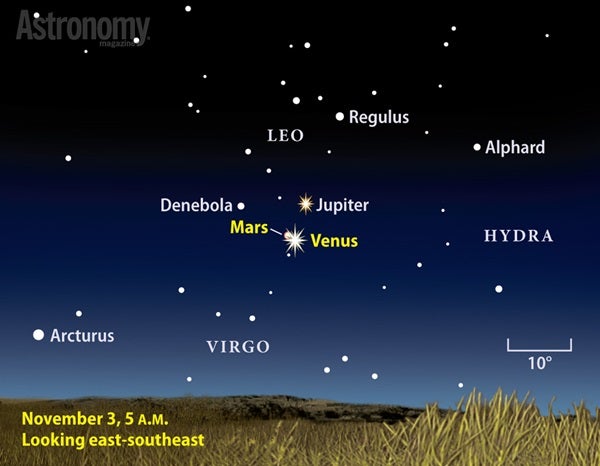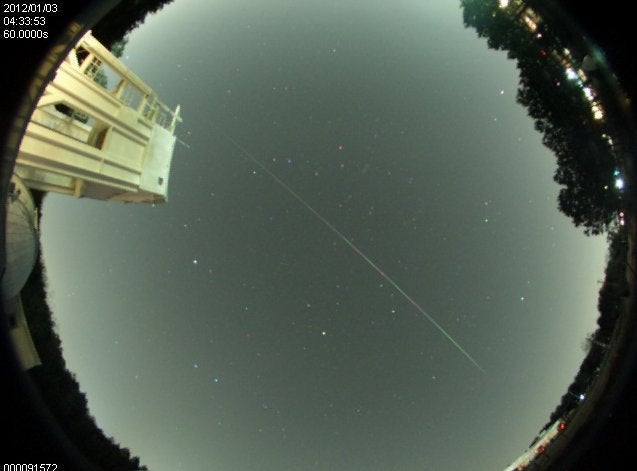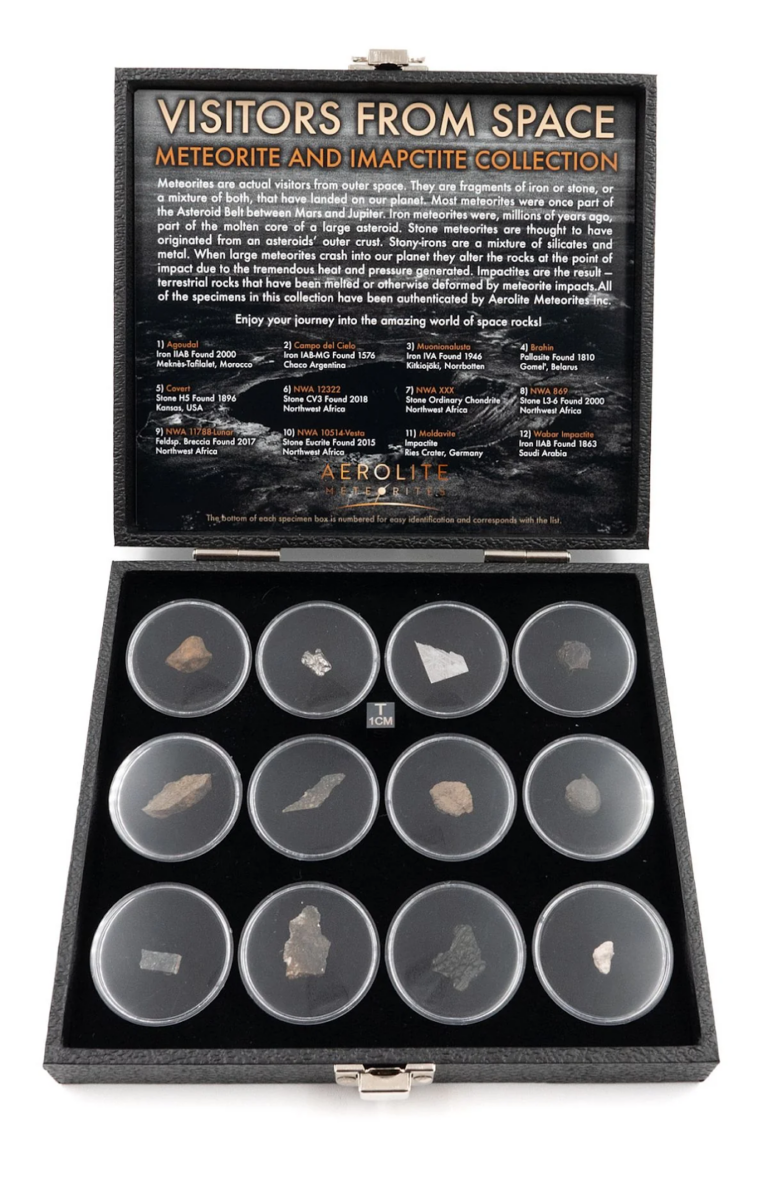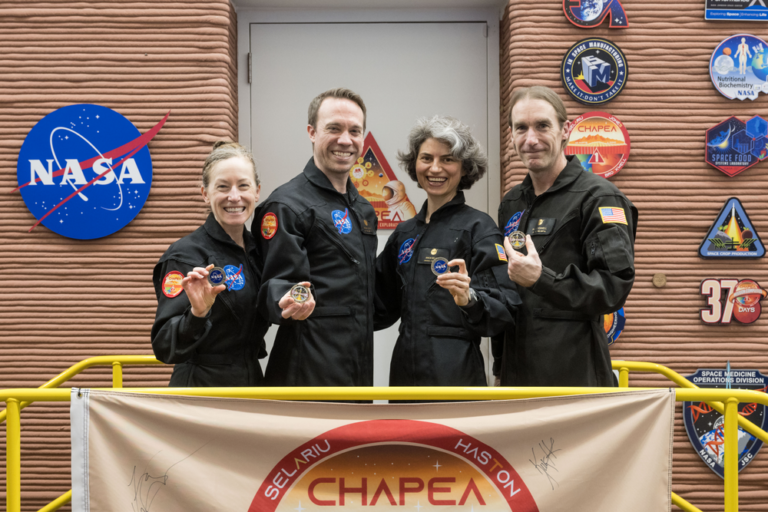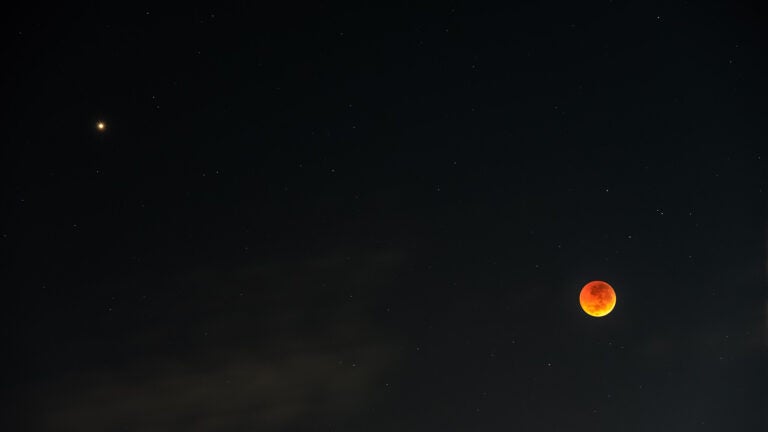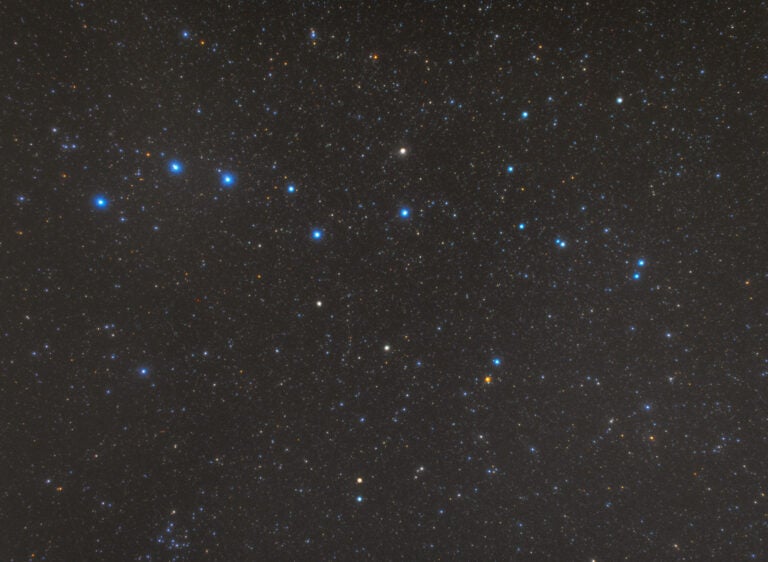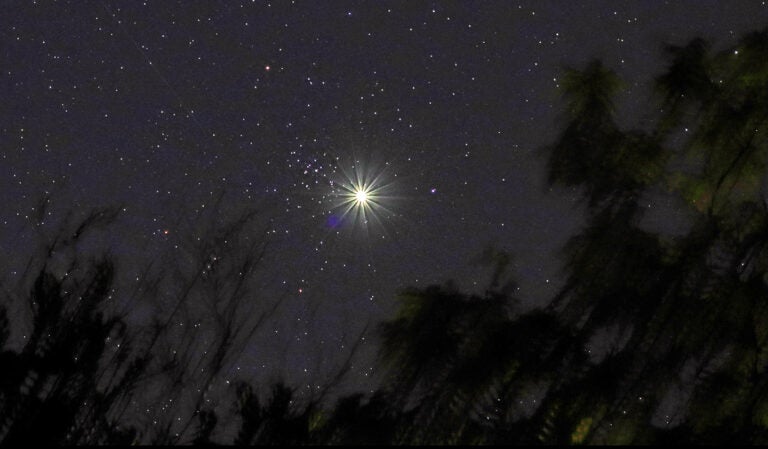Mars passes from Leo into neighboring Virgo today, placing the Red Planet almost on top of Venus from Earth’s perspective. There, Mars will lie 0.8° northeast (left) of Venus and appear in the same field of view through a telescope at low power.
Although ruddy Mars appears only 4″ across and largely featureless, Venus shows a 22″-diameter disk that is slightly more than half-lit.
By Tuesday morning, Venus crosses the border into Leo and passes just 0.7° due south of Mars, completing their closest approach until October 2017.
Because the two orbit the Sun more quickly than Jupiter, they have already started to pull away from the gas giant planet. The gap reaches 6° tomorrow and will continue to grow in the coming weeks, slowly breaking up the planetary trio that has graced earthly skies for weeks.
The near Last Quarter Moon aides dark skies by rising late this evening, and climbs highest in the south as twilight starts to paint the sky. The half-lit Moon lies in the constellation Cancer the Crab, approximately 5° south of the Beehive star cluster (M44).
In the coming days, Venus, Mars, and Jupiter will remain relatively close together as the Moon sweeps past Jupiter Friday morning and the Venus-Mars pair on Saturday morning, putting on yet another pre-dawn show.
To keep track of current sky events, visit The Sky This Week.

